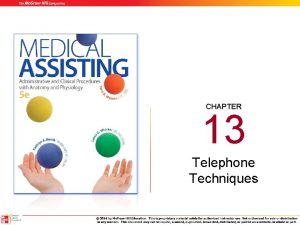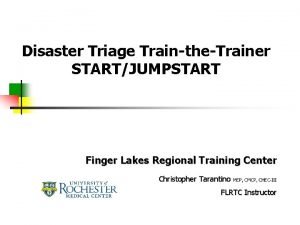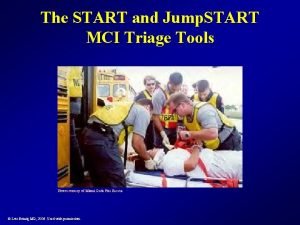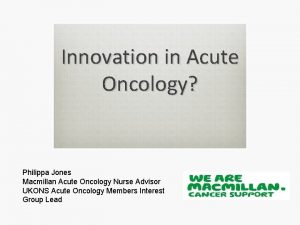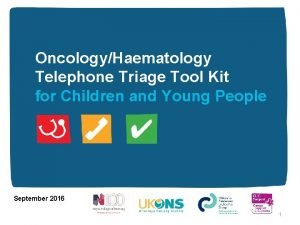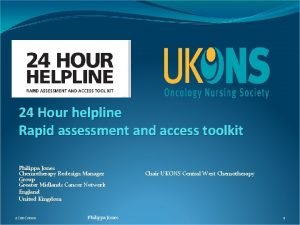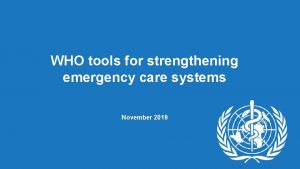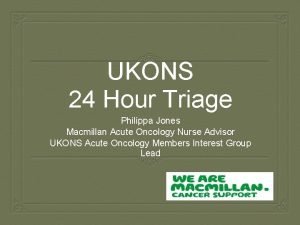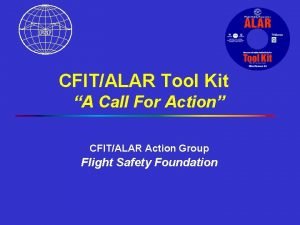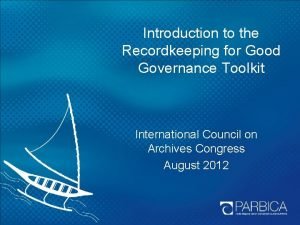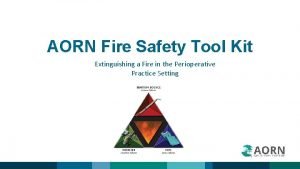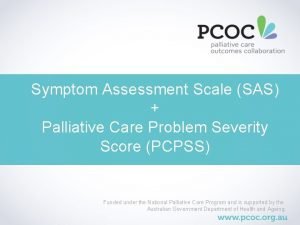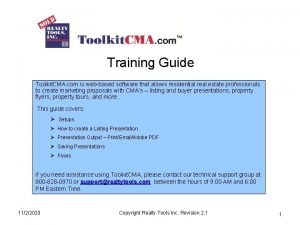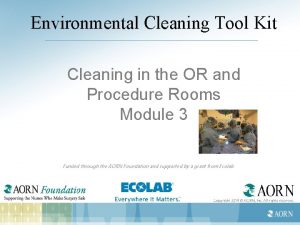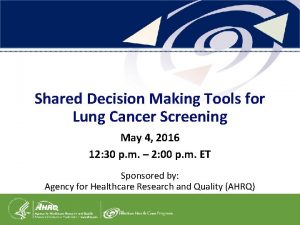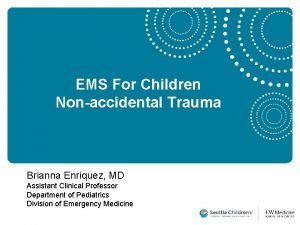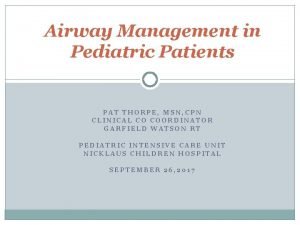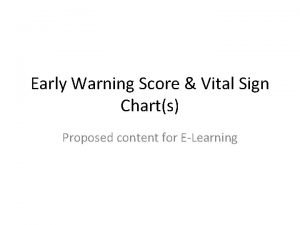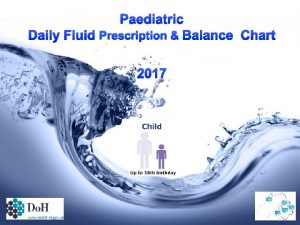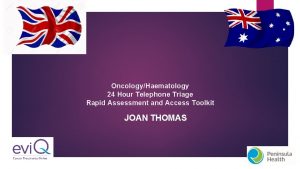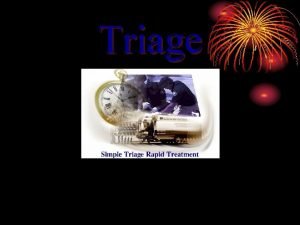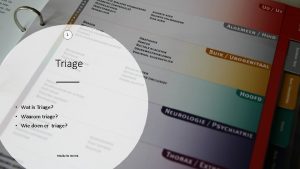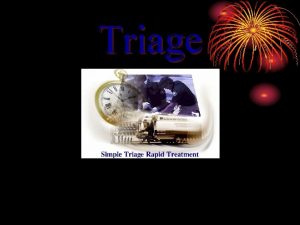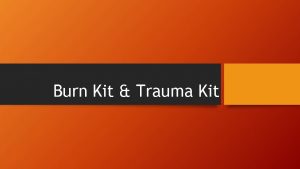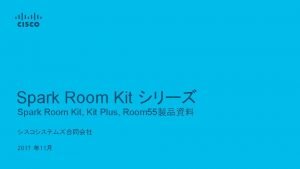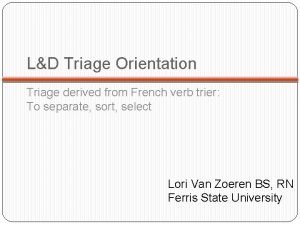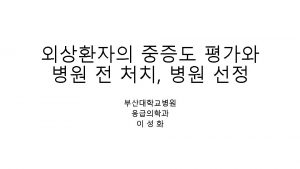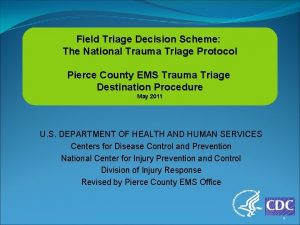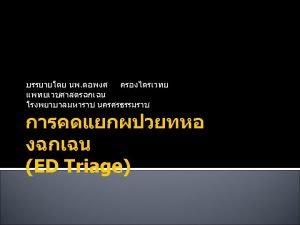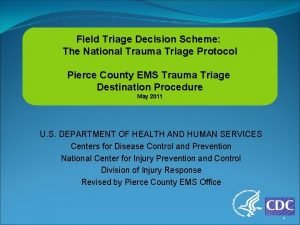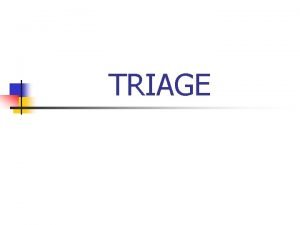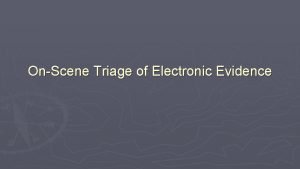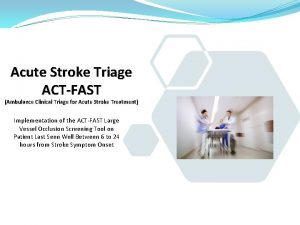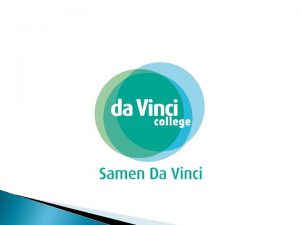OncologyHaematology Telephone Triage Tool Kit for Paediatric Cancer
























- Slides: 24

Oncology/Haematology Telephone Triage Tool Kit for Paediatric Cancer Services This presentation supports both initial and refresher training 2 nd Edition 2020 Review date: August 2023 1

This presentation will cover…. • What is the Telephone Triage Tool Kit? • Background • Training and competency achievement • Evaluation • Implementation • How to use the Tool Kit 2

Aim of the Tool Kit To provide guidance and support to the practitioner at all three stages of the triage process: • Contact and data collection / record of reported symptoms • Assessment/definition of problem • Appropriate intervention/action. The Tool Kit has been developed to provide: • A simple, reliable assessment process • Safe, understandable advice • Communication and record keeping • Competency based training • An audit tool. 3

The Paediatric Toolkit Evaluation has shown the Tool to be reliable, robust and valuable. The Toolkit is a standardised approach to triage and assessment, providing: • An evidence-based assessment tool • A log sheet checklist; to prompt practitioners, record triage of symptoms, assessment and communication with families. It sets a standard for best practice and is an excellent training and educational resource: • It can be used to provide evidence of quality and safety for both the organisation and the individual practitioner • It is useful in identifying risks and poor practice, helping to determine education and training needs • It can support consistency of advice, and consistency of service across POSCUs and PTCs as well as between centres. It is endorsed by Royal College of Nursing (RCN), Children's Cancer and Leukaemia Group (CCLG), UK Oncology Nursing Society (UKONS) and CLIC Sargent 4

Training • All staff must have read the 24 hour triage training manual • All staff using the Tool Kit must receive training and assessment of competency. Staff who are not trained to use the Tool Kit should not provide telephone advice. 5

What is The Telephone Triage Tool Kit? A risk assessment tool using a RAG (RED, AMBER, GREEN) scoring system. For telephone triage of children and young people with cancer and serious blood disorders. 6

Scoring system Action / Symptom selection is based on the triage practitioner’s grading of the presenting symptoms/toxicity following interview, data collection and triage: • RED – any toxicity graded here takes priority and action must follow immediately. Caller advised that patient must attend for urgent assessment as soon as possible. You should consider halting the remaining assessment if emergency care is needed. • 2 or more AMBER = RED – if a patient has two or more toxicities graded amber they must be escalated to red action and caller advised that patient must attend for urgent review as soon as possible • AMBER – one toxicity in the amber area must be followed up with a telephone call from an identified member of staff within 24 hours. The caller must be instructed to call back if the patient’s condition deteriorates, their symptoms worsen or they continue to have concerns • GREEN – The caller must be instructed to call back if the patient’s condition deteriorates, their symptoms worsen or they continue to have concerns. 7

8

The assessment tool will: • Determine “the patient’s level of risk” • Prompt the practitioner with appropriate questions to ask, to gain information from the patient • Provide a reliable guide to toxicity/problem grading • Prioritise the level of urgency indicated by the presenting symptoms and will aid in identifying potential emergency situations. 9

Contact record – the ‘Log Sheet’ It is vitally important that the data collection process is methodical and thorough in order for it to be useful and provide an accurate record of the triage assessment. A Log Sheet should be completed for all calls and unscheduled patient visits. This will facilitate audit of the helpline service. The Triage boxes MUST all be marked accordingly. IF YOU HAVEN’T TICKED IT, YOU HAVEN’T ASKED IT! 10

Step 1 - Data collection • Perform a rapid initial assessment of the situation: “Is this an emergency? ” Do you need to stop and contact the emergency services instead. . . . 999 • Does the caller understand, communicate with you? If not take name, contact details and other data at the top of log sheet and advise caller to attend for urgent review as soon as possible or proceed to step 2 • Ask questions in a logical sequence. Follow the log sheet and the assessment tool • Provide information slowly and thoughtfully assess the callers comprehension, anxiety and distress throughout the process • Do you have any doubt about the patient / carer’s ability to provide information accurately or understand questions or instructions provided? If so then a faceto-face consultation must be arranged • Record caller’s name and current contact details in case the call is interrupted and you need to get back to the caller. 11

Step 2 – Assessment of child/YP • What is the patient / carer’s initial concern, why are they calling? • You should assess and grade this problem first, ensuring that you record this on the Log Sheet. If this score is RED then you may decide to stop at this point and proceed to organising urgent face-to-face assessment • If the patient is stable you may decide to complete the assessment process in order to gather further information for the face-to-face assessment. 12

Step 3 – RAG grading assessment • If the patient / carer’s initial concern scores AMBER, record this on the Log Sheet and proceed with further assessment • Move methodically down the triage assessment tool, asking appropriate questions. e. g. Do you have any nausea? If NO tick the green box on the Log Sheet and move on • If YES use the questions provided to help you grade the problem and note either amber or red and initiate action (tick the Log Sheet) • The 2020 version includes asking about shunts or Ommaya reservoirs as well as other medical devices. This might influence your grading. • If the patients symptoms score RED or another AMBER at any time they should be asked to attend for assessment 13

Step 4 – checking the record Look back at your Log Sheet • Have you arranged assessment for patients who have scored RED? • Have you arranged assessment for patients who have scored more than one AMBER? • Have you fully assessed all the patients who have scored one AMBER, is there a tick in all the other green boxes of the Log Sheet? • Have you fully assessed all the patients who have scored GREEN, is there a tick in all the other green boxes of the Log Sheet? • Have you recorded the action taken and advice given? • Have you documented any decision you have taken or advice you have given that falls outside this guideline, and recorded the rationale for your actions? • Have you fully completed the triage process? 14

Special considerations • If, in the triage practitioner’s clinical judgement, the guideline is not appropriate to that individual situation, the rationale for that decision should be clearly documented • If the triage practitioner’s assessment is borderline select the higher risk category; be cautious • The organisation must agree the triage pathway and populate it with local detail and responsibilities. Refer to training manual for guidance on Trust Governance 15


Log Sheet review The Hospital Designated Responsible Practitioner must review all Log Sheets within 24 hours of the call as follows: GREEN Was this the correct advice? If not is any action / training needed now? 1 AMBER Call the patient to assess if they are improving or not? 2 AMBER or RED Follow the patient: were they admitted or not? Admitted or Discharged Admitted - find them and check management. Discharged - call to see if they are improving. Original log sheet “Review of actions taken” should be completed and filed in the patients medical records 27

Scenarios and reflective learning 18

Scenarios, role play and reflection A number of training scenarios are available as an addition to this training pack. Your local trainer may have alternative local scenario’s or they may choose to constructively critique and reflect on some real log sheets from your centre. 19

Guide to using scenarios Use a selection of the provided scenarios or use one from the local team or group experiences; • Role play giving information or taking the call and recording • Support general discussion about the value and relevance of the triage process • Demonstrate practical application of the triage process in the clinical setting. • Document your assessment on a Log Sheet • Discuss your thinking and rationale for decisions with your group 20

Guide to using review and reflective constructive critique • Randomly select Log Sheets from your centre. Facilitators should anonymise staff who completed the log; • Discuss what you think has been done well • Discuss what you think could be improved • Did you disagree with any information – why? • Discuss your thinking and rationale for your critique with your group 21

This toolkit is being adopted as the national standard. Today we learned that; • • It can improve patient safety and care by ensuring that everyone receives a robust, reliable assessment every time they contact the paediatric oncology helpline for advice. It ensures assessments are of a consistent quality and uses an evidencebased assessment tool It provides management and advice appropriate to the patient’s level of risk. It ensures that those patients who require urgent assessment in hospital are identified and that appropriate action is taken. It can also identify and reassure those patients who are at lower risk and may safely be managed by parents / carers or the primary care team or through a planned clinical review and avoid unnecessary emergency attendance It provides triage training and competency assessment for practitioners It facilitates accurate records of the assessment and decision-making process in order to monitor quality, safety and activity. Families have more confidence in care when they experience consistent approaches. 22

? Any questions? 23

Thank you! This training pack was developed by the RCN / CCLG Children and Young People’s Telephone Triage Tool Kit Working Group (2020), with design and support from CLIC Sargent. www. rcn. org. uk/ CLIC Sargent is pleased to support this work for the benefit of children and young people with cancer and their families, and is also supporting training. The CCLG supports dissemination of the documents through hosting them for open access on their website. www. cclg. or. uk To find out more about CLIC Sargent visit www. clicsargent. org. uk 24
 Kolposkopi, px
Kolposkopi, px Chapter 41 telephone techniques true or false
Chapter 41 telephone techniques true or false Yellow tag triage examples
Yellow tag triage examples Triage start
Triage start Ukons acute oncology guidelines
Ukons acute oncology guidelines Oncology triage tool
Oncology triage tool Oncology haematology helpline triage tool
Oncology haematology helpline triage tool Who emergency care system framework
Who emergency care system framework Oncology triage tool
Oncology triage tool Ukons
Ukons Esu pencil
Esu pencil Alar tool kit
Alar tool kit Corporate governance tool kit
Corporate governance tool kit Tool kit learning walk
Tool kit learning walk Aorn fire safety
Aorn fire safety Sas scale
Sas scale Sanctuary model tool kit
Sanctuary model tool kit Toolkit cma login
Toolkit cma login Strategic workforce planning toolkit
Strategic workforce planning toolkit Ecolab housekeeping tool kit
Ecolab housekeeping tool kit Lung cancer screening shared decision making tool
Lung cancer screening shared decision making tool Paediatric assessment triangle
Paediatric assessment triangle Paediatric et tube size formula
Paediatric et tube size formula Vital sign chart
Vital sign chart Paediatric fluid balance chart
Paediatric fluid balance chart

